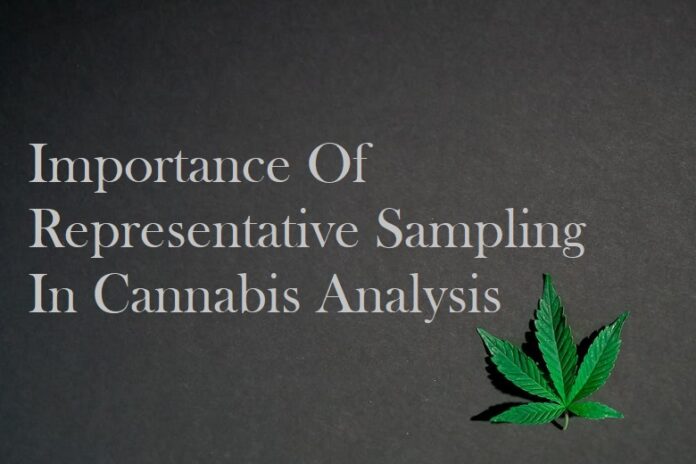Cannabis and hemp are two strains of the same plant Cannabis Sativa. However, they are different at the core molecular level, with different chemical and genetic compositions. In common parlance, marijuana or cannabis used for medical and recreational purposes has the psychoactive element tetrahydrocannabinol or THC. Hemp is distinguished as having very low levels of THC, which is a concentration below 0.3% on a dry weight basis.
Hemp and marijuana or medical cannabis have different uses. Hemp is a more functional product used to make apparel, upholstery, construction materials, packaging materials, fiberglass, skin care products, topical application for pain alleviation, and CBD products for adults, epilepsy children, and pets for calming them during anxiety attacks. With aid of third-party testing services from reliable laboratories, growers and processing units get their product samples tested.
Why is it important to test cannabis and hemp?
Table of Contents
Testing cannabis and hemp products are not mandatory as per regulation in the US or Canada. However, any product can be only when the THC concentration level is lower than the prescribed limit. If the sample is found to have THC or total THC and THCA levels more than the threshold measurement, then the whole batch needs to be destroyed in a responsible way to avoid any federal charges.
Besides, hemp and CBD are used in making edible diet supplements from a plant-based source. It is for microbes like bacteria, fungi, yeast, and other pathogens to contaminate the food processed and waiting to be sold in supermarkets. Th
Even at the harvesting and storage stages if best practices to discourage microbial action are followed it is necessary to keep testing at various stages from seed to pack to ensure the end product is safe for human consumption.
Testing standards of labs
It is essential for testing procedures to be followed with complete data mentioning the standard of the procedures followed and specifications of the raw material used during the process.
The laboratory has to mention all the relevant details followed in testing different parameters, the standard of the operating process followed, and specifications of solvents with details about the ratio with water if required in the opted method.
The method followed is similar to food chemical codex for all the hemp and CBD-related items used as dietary supplements or ingestible capsules.
The whole process needs to be documented, and all the details have to be recorded ideally the paper trail has to be maintained, for up to five years as per the regulations.
But for a testing procedure to be even and successful across the batches, then it cannot be a concentrated effort that depicts only a few cases. The reference sample must represent a larger population size with an even frequency distributed across the population.
A representative sample that can check for all the parameters in a batch will be an ideal way to test cannabis as this method represents an even larger population.
Why is representative sampling essential for cannabis testing?
Cannabis is a complex plant with differences in chemical structure for all the compounds present in cannabis and hemp strains. Testing it for its cannabinoids and terpenes is not as easy, specifically since the psychoactive compounds THC give that high or stoned feeling. And contrarily, CBD does not give a sense of high or create that aloof drifting feeling but has a calming effect.
It is clear that when different outputs are derived from a single source then its compounds may be represented by isomers with similar chemical structures but different smells, tastes, and effects on the subject. This fact is valid for cannabis plants that have several cannabinoids that are non-polar. Cannabis plants have different levels of homogeneity and need to use representative sampling for homogeneous materials even through the different batches. For instance, one leaf will not be different from the other in terms of characteristics, but the levels of compounds can differ between flowerhead and leaf.
The concentration specifics of gradients used in liquid samples often lead to inhomogeneous distribution, as making liquid samples is very difficult. Non-viscous liquid’s concentration gradient decreases. Such challenges are overcome by using representative sampling methods by stirring and making the sample a thorough mix.
In the case of solids, stirring and mixing is not viable solution as it disturbs the composition. The only way to test a solid is by making it into a fine powder.
What are the repercussions of not using representative sampling?
The reason why representative sampling is difficult in cannabis plants is understandable, as many factors influence the composition of the end product. The type of soil, weather conditions, water, and plant exposure to chemicals are some of the factors that influence the chemical mapping of two strains of a plant from the same mother plant seed and cultivar, albeit grown in different locations. The THC and CBD levels may be more in the flowers than stalks for a sample from one plant, but a seed sown at the same time in different locations from the same mother plant may have different levels in its stalks or leaves instead of flowers. Dealing with such complexities makes representative sampling a challenge yet it is required for a homogeneous depiction of the characteristic.
- Difficulty in establishing a standard product
- One bottle of CBD oil can be more effective than the other though the same batch of cannabis was used in making the product
- Difficulty in gaming consumer trust in an industry that is already rising back from a fallen glory
- Difficulty in formulating best trade practices or standards for future reference points
- Inability to meet consumer insight-driven approach for delivering safe-to-use hemp products.
Conclusion:
Testing is a paramount step in establishing a standard as it is documented proof of third-party expert opinion, that is conducted after the requisite trials and sampling. But if the procedure followed for testing is not wholesome and conducive to representing the facts as clearly as possible, then the purpose of testing cannabis is defeated.











